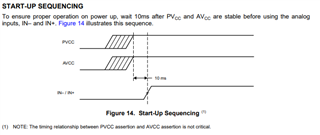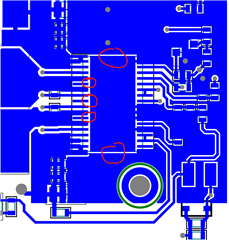Tool/software:
Hi.
We have been using the DRV595 in several projects over the last years. Now we have a new project and encounter the same behaviour as described in the linked post. All input signals are applied, input voltage is ok, IN+/IN- as usual, Gain is ok, SDZ slew rate checked, no FAULT signal,GVDD is 7V, BUT: no output signal. Both output pins are about 900mV and no PWM or output voltage visible.
Do you have any ideas? Screenshot of schematic attached.
Best regards,
Christoph









